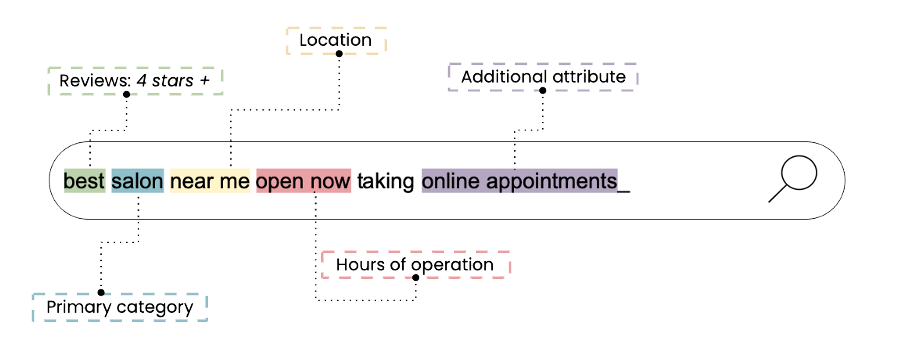
It is amazing to think that Google was founded almost 22 years ago and went public in August 2004, over 16 years ago! During this time, rapid change has been the one constant in the world of search. Search continues to evolve as consumers shift the devices, platforms, and intent of their search behavior, and that evolution isn’t showing any signs of slowing down. If anything, the rate of change is only accelerating!
This presents major opportunities for growing businesses. By staying current on emerging trends and adjusting your tactics wisely, you can gain an edge in your market.
At DSG, we help clients of all kinds do exactly that. Here are a few insights and tips you can use to improve your SEO performance.
PPC and SEO: unique marketing channels that yield complementary data
If your business is like many, you rely on both paid and organic marketing to expand your reach and generate revenue online. There is a delicate balance between paid and organic marketing. Often, we encounter businesses who look at the data from their paid and organic search tactics as separate entities. However, when businesses strategize properly, they can use two powerful forms of paid and organic marketing—PPC and SEO—in harmony to maximize efficiency and spend smarter ad dollars.
First, let’s define our terms. PPC (Pay Per Click) is a method of driving clicks through paid search campaigns via keyword bidding. SEO (Search Engine Optimization) aims to increase your business’s organic search engine rank by improving the discoverability, relevance, and authority of your website.

PPC and SEO each have separate roles, but that doesn’t mean that they need to work independently. PPC and SEO share a common goal: attracting people to click to your website. In other words, it’s like chocolate and peanut butter–two great tastes that taste great together.
So, why not mash ‘em up? Let’s look at how SEO and PPC can support each other. A holistic approach to search will help you navigate an increasingly complex landscape.
Keyword trends can inform strategies.
Here are some strategies you can use to intertwine your SEO and PPC data to gain a holistic view of your campaigns:
- First, identify high ranking keywords from your organic search campaigns. Use this data to reduce or eliminate your bids on these same keywords in your PPC campaigns—especially if a campaign has a high cost per click. If you’re already ranking well for these keywords organically, it becomes less valuable to spend your PPC budget on them.
- Second, analyze data on your PPC click-through rates. Identify keywords with an above-average PPC click-through rate but a low organic click-through rate, and then incorporate those keywords into your SEO tactics. This data indicates that these keywords are highly relevant and valuable, and should be a high-priority target for your SEO strategy. This enables you to extend your digital reach without extending your marketing budget.
What’s your online listing strategy?
The way that we conduct searches is evolving. People no longer search using a singular keyword—they ask questions that reveal specific needs and high intent. If you want to get serious about your search engine optimization, you need to get serious about your online listings.
In fact, 70% of search queries contain three or more keywords. This means your customers are searching with the intent to answer specific questions about your business—they’re not just looking for you, but looking for information about why your business is the best fit for their needs.
Changes in search behavior also reflect the rise of omnichannel customer experiences. These days, a customer may start their search on Google, but experience a journey of many different platforms before arriving at their final purchasing destination.
We all do it without giving it a second thought. For instance, when you’re in search of tonight’s dinner, you may hypothetically start by Googling “pizza places near me.” Once you’ve discovered a contending pizza shop, you might visit their Yelp page to check out reviews, then their Facebook and Instagram to see if they’re running any special deals. Finally, you plug their name into Waze and drive to your destination. All of these platforms—Google, Yelp, Facebook, Instagram, and Waze—played a role in your purchasing decision, and you may not have arrived at your destination if the pizza shop had missing information.
For this reason, it’s more important than ever to ensure that your hyperlocal presence is robust and your digital listings are complete with relevant information on your business.

Today, business listings require more than just a business’ name, address, phone number. Search, social, navigation, and voice platforms offer rich libraries of additional attributes that allow businesses to share the information that their customers are searching for. For example, businesses have the ability to specify holiday hours, pickup/drop-off/delivery capabilities, FAQs, products, menus, and much more.
When a business’ online presence is fully populated with hours, reviews, photos, and relevant information like menus or product lists, consumers are 197% more likely (PDF) to view that business as a place they can depend on. Proactively offering solutions to these queries helps your customers to find you.
These are just a few considerations for harmonizing SEO and PPC, and boosting your business’ performance in search. For a deeper discussion about these concepts, check out our recent webinar—you can watch the full recording here.
For more information about optimizing your online presence, check out Ruby’s free guide.
DSG is a digital marketing agency in Malvern, PA.



